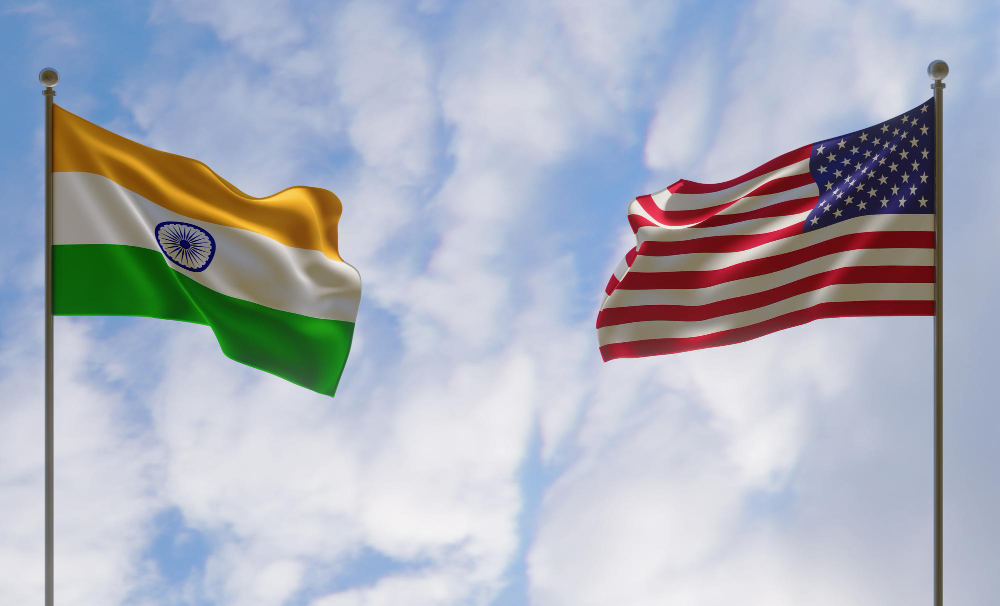Here’s the deal: Starting August 1, all Indian goods entering the United States will now carry a 25% import tariff. That’s a massive jump from the average 3% earlier. This change will have significant implications on freight forwarding, as well as revenue, jobs, and growth for Indian exporters, manufacturers, and logistics players.
This move by Trump’s administration, citing energy trade concerns and strategic interests, puts India’s top export sectors on the line. If you care about India’s economic trajectory or operate in trade, logistics, or policy, this is a shift you can’t afford to ignore. The impact on freight forwarding could be profound, with increased challenges for logistics companies.
Why This Tariff Matters More Than You Think
Let’s break it down with real numbers:
- $86.5 billion worth of Indian goods were exported to the US in 2024.
- The US accounted for 20% of India’s total exports.
- India maintained a $41 billion trade surplus with the US last year.
Now, with a 25% tariff across the board, up to $30 – 33 billion in export value is at immediate risk. Freight forwarding companies will likely need to reassess their strategies to handle these changes effectively.
This isn’t theory. This is already affecting order books, shipping volumes, and pricing conversations across every boardroom from Surat to Chennai to Mumbai, especially amongst freight forwarding businesses.
Sectors on the Frontline
Some sectors are more exposed than others. Here’s who’s getting hit the hardest:
- Electronics
- $11.1 billion in exports to the US.
- Price-sensitive and high-volume.
- Tariff wipes out competitive edge.
- Gems & Jewellery
- Over $9.9 billion at stake.
- Margin-dependent.
- Pipeline delays already triggering layoffs in key clusters.
- Pharmaceuticals
- US takes half of India’s pharma exports.
- From 0% to 25% duty.
- Companies like Sun Pharma and Dr Reddy’s will feel this instantly.
- Apparel, Textiles, Auto Components
- Labour – intensive, MSME-heavy.
- Low elasticity on cost.
- Immediate risk of order cancellations and supply shifts to Vietnam, Indonesia, and Bangladesh.

Immediate Fallout Across the Supply Chain
This isn’t just about manufacturers. Here’s how it trickles down:
- Exporters face margin erosion. Absorbing a 25% cost? Not feasible for most.
- Buyers in the US are pausing or diverting orders. Alternative suppliers are gaining ground.
- Ports and logistics firms are already seeing lower volumes. Shipments are being rerouted or sped up to beat tariff deadlines.
- Freight forwarders will now need air-tight pricing strategies, reworked routes, and stronger client communication due to the new tariff impacts.
“Freight forwarders and port operators should brace for decreased cargo volumes and heightened operational complexity as exporters explore alternative markets and logistics routes.”
Macro-Level Damage: Not Just Trade, but Growth
These aren’t just sectoral shocks. The broader economic ripple effect is serious.
- GDP may slow by 0.2–0.5 percentage points if the tariffs stay for a full year, deeply affecting freight forwarding processes.
- 10% of India’s total exports are under immediate threat.
- India now faces a comparative disadvantage even among Asian peers:
- Vietnam: 20%
- Indonesia: 19%
- Japan: 15%
- India: 25%
“Indian exporters, especially MSMEs, face severe margin pressure as they confront a cost disadvantage against competing Asian economies like Vietnam and Indonesia.”
Strategic Response: Adapt or Lose Ground
The brutal reality is this: the exporters and logistics players who survive will be those who move fast and smart. Efficient freight forwarding services will be crucial during this time.
Here’s what needs to happen:
- Shift routes where possible. Diversify markets beyond the US.
- Explore AI-based logistics planning to cut time and cost.
- Strengthen customs brokerage operations for alternative trade lanes.
- Renegotiate pricing models to share the tariff burden with buyers.
“Triton Maritime & Logistics and other freight players must remain agile in adapting pricing, routes, and client communications to turn disruption into opportunity.”
Will a Trade Deal Fix It?
There’s always a chance of a deal. India and the US have weathered tariff storms before. But the uncertainty until then is damaging enough for those engaged in freight forwarding.
- Peak Fall-Winter season orders are already under pressure.
- Buyers hate risk and India just got riskier to them.
- Without a new deal, India could lose $30+ billion in exports and shave 0.5 percentage points off GDP in FY26.
“Without swift trade negotiations, India’s GDP growth could slow by up to half a percentage point, highlighting the broader economic consequences beyond just logistics.”
Quick Recap: Where We Stand
| Metric | Pre-Tariff | With Tariff |
| US Tariff on Indian Goods | ~3% | 25% |
| Exports to US | $86.5 billion | $60 – 65 billion (projected) |
| Potential Loss | – | $30 – 33 billion |
| GDP Impact | – | -0.2 to -0.5 p.p. |
| Sectors Affected | Electronics, Pharma, Gems, Auto | Same, but worse |

Final Word
This is one of the most consequential trade moves India has faced in years. It’s a blow, no doubt—but it’s also a wake-up call.
“This tariff move is both a blow and a wake-up call, catalyzing faster innovation and diversification in India’s shipping and logistics sectors.”
To weather this, exporters, freight players, and policymakers need to be proactive. Reacting later will cost too much.
What’s Your Take?
If you’re in exports, logistics, or policy, how are you planning to respond to this shift? Drop a comment or message us. Let’s open the conversation and crowdsource ideas that matter.




